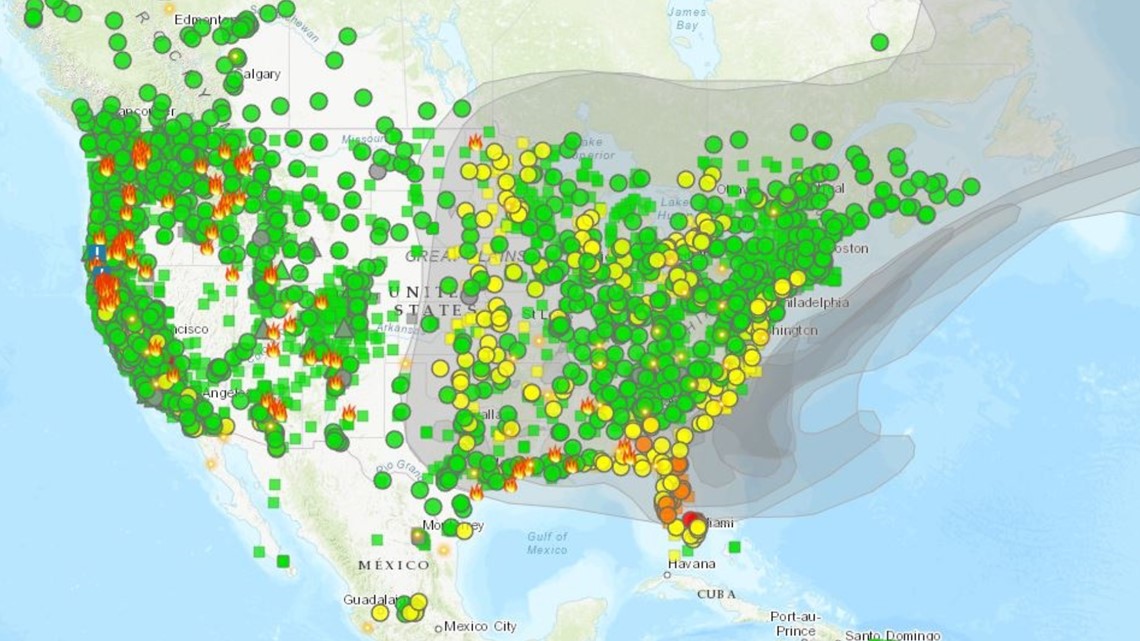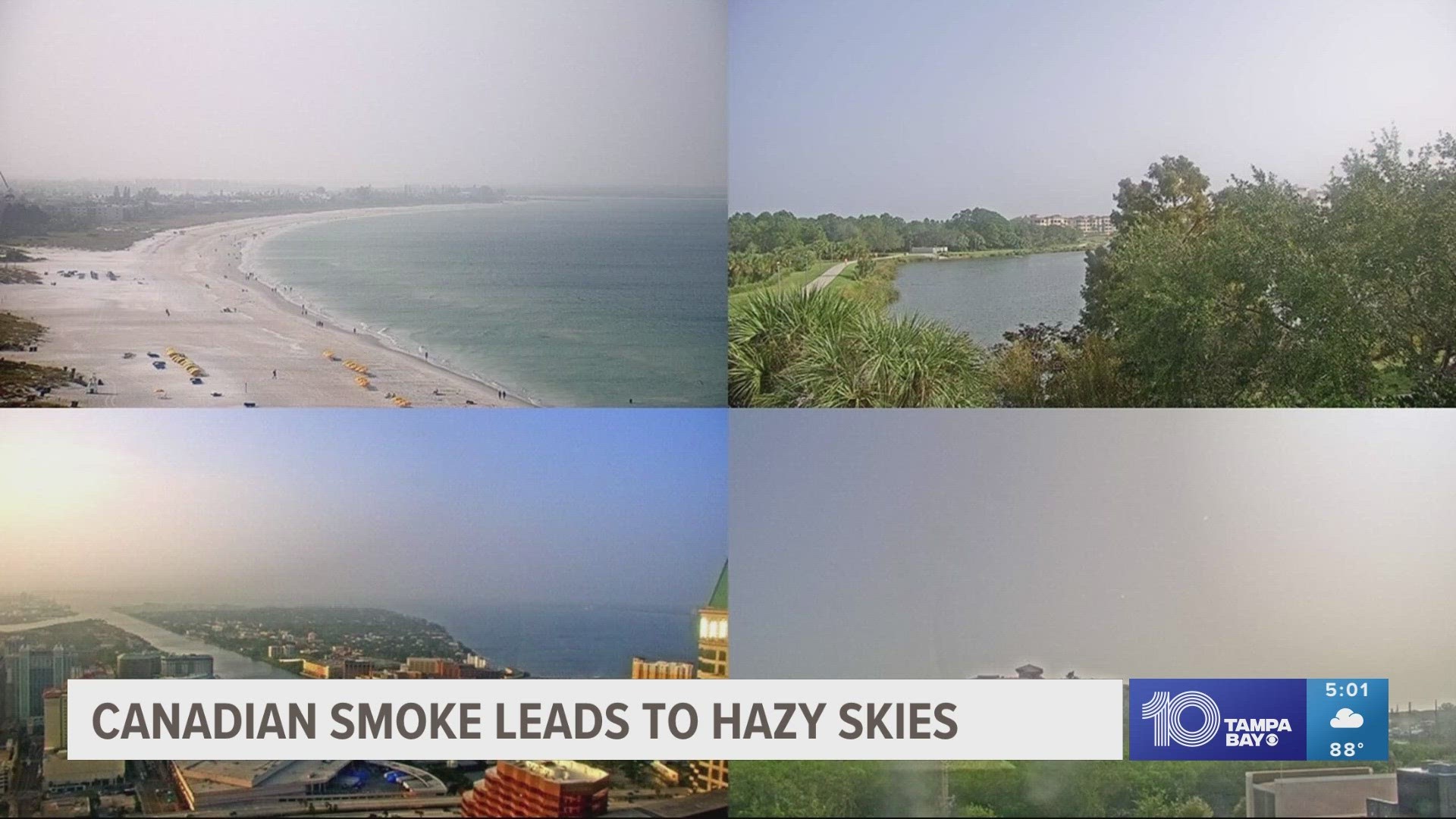TAMPA, Fla. — Notice a hazy sky these past few days across the Tampa Bay area? That's smoke from wildfires burning all the way up north in Canada.
High pressure in the eastern United States is helping usher in northeasterly winds, which are pulling down smoke from fires burning in the Canadian provinces of Ontario and Quebec.
Take a look at the map below from AirNow.gov — you'll see extensive coverage across much of the country, but the thickest smoke is just off the southeastern U.S. and pushing into Florida. In fact, some of the worst air quality across the entire county is in the Sunshine State.


Hillsborough County leaders issued an air pollution advisory on Tuesday that runs through midnight.
"We are experiencing elevated levels of PM2.5 in Hillsborough County and expect levels to reach the Unhealthy for Sensitive Groups Air Quality Index range," according to a news release.
Pinellas County also issued an air pollution advisory through midnight because of the elevated levels of pollution. Additionally, Sarasota County issued its own air pollution advisory, but it will last through dusk on Oct. 4.
The air quality is considered "unhealthy" just north of Miami and "moderate" to "unhealthy to sensitive groups" in Tampa. In areas where air quality is poor, people are encouraged to go inside if respiratory symptoms develop.
"People with lung disease such as asthma, older adults, children and teenagers, and people who are active outdoors, should consider reducing prolonged or heavy outdoor exertion until air quality conditions are better," leaders from Pinellas County explain.
Doctors say, however, it’s not nearly as bad as what they saw up north earlier this year. Still, people with sensitivity to smoke might see symptoms ranging anywhere from itchy eyes and congestion to difficulty breathing.
“It's a very small molecule and it actually is able to enter through our eyes, our nasal mucus, and our lungs,” said Dr. Mona Mangat, a specialist with Bay Area Allergy and Asthma. “Everybody is going to be affected differently. But patients that have underlying respiratory diseases or cardiac disease are going to be affected more than other people.”
For those with underlying conditions or respiratory disease, experts recommend staying indoors if you can until the smoke clears.
If you do have to venture outside, Mangat says wearing an N-95 or KN-95 mask would likely help.
Northeast winds are forecast to persist through the several days. This will cause at least some smoke to hang around for some time.
Canada has seen a significant number of wildfires this year and is trending higher than average, according to The New York Times. As of the country's latest update, 6,496 fires have been reported year to date compared to the 10-year average of 5,380 fires year to date — a 121 percent increase.

